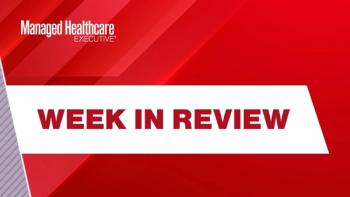
Two Things to Know About the Patient as the New Healthcare Payer
Eye-opening analysis from TransUnion Healthcare reveals patients continue to see rising costs.
Rising healthcare costs are having an impact not only on providers, but also on consumers, according to new analysis.
TransUnion Healthcare
Jonathan Wiik, principal healthcare strategy for TransUnion, presented the findings from his new book, "
This data was analyzed from millions of estimates performed by TransUnion’s Estimation solution, calculating the patient’s out-of-pocket cost for commonly performed for common procedures.
“For payers, deductibles have been the primary focus to keep premiums in check,” says Wiik. “As patient out-of-pocket costs have tripled in the last 10 years, managed-care departments need to look closely at where the revenue is coming with respect to their insurance contracts, and how much of that is from the payer and how much of that from is from the patient.”
Patients pay three times as slowly as insurance carriers, and cost twice as much to collect revenue from, according to Wilk. “The patient is the new payer, and healthcare leaders need to move away from traditional billing methods, engage patients early, and optimize the collection efforts and protect their earned revenue,” he says.
Other unique findings
“Patients are now responsible for 30% of their healthcare expenses-a percentage much, much greater than what we saw just a few years ago,” says Wiik. “Even newly insured patients, with their new ‘coverage’ lack an ability to pay for the rapidly rising costs of healthcare.”
The analysis also found that higher medical costs, higher deductibles, and increased patient responsibility are some reasons consumers are struggling to pay their medical bills in full.
“The bottom line is that high deductibles and other cost shifting methods have delivered incongruent results to the provider, patient, and employer,” he says. “The economic factors created by these significant changes in reimbursement have caused sustainability concerns for the industry and our nation’s economy. The U.S. healthcare system represents rapidly rising costs that consume over 17% of the country's GDP-its highest expense.”
Based on the analysis, Wilk has two pieces of advice for healthcare executives:
- As hospitals navigate this new era of patient payments, it will be important for them to provide more financing options to help patients meet their financial obligations, such as down payments, payment programs, and loans. “Higher deductibles and the increase in patient responsibility is causing a decrease in payments from patients to providers,” Wiik says. “With millions of dollars of unpaid medical bills, it is necessary for hospitals to institute new processes to recover monies owed to them.”
- Given the increased payment risk to providers and the dilution of available credit, differentiating between a patients’ ability versus willingness to pay will become increasingly important for hospitals. “Having processes and tools in place to establish funding mechanisms will benefit the patient and provider,” Wiik says.
Newsletter
Get the latest industry news, event updates, and more from Managed healthcare Executive.

















































